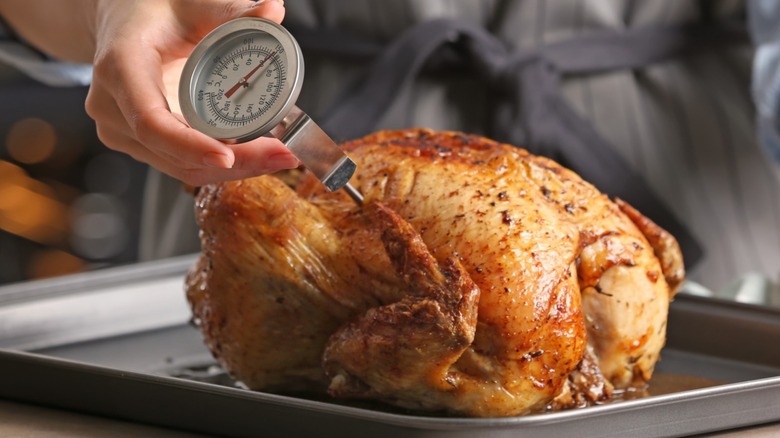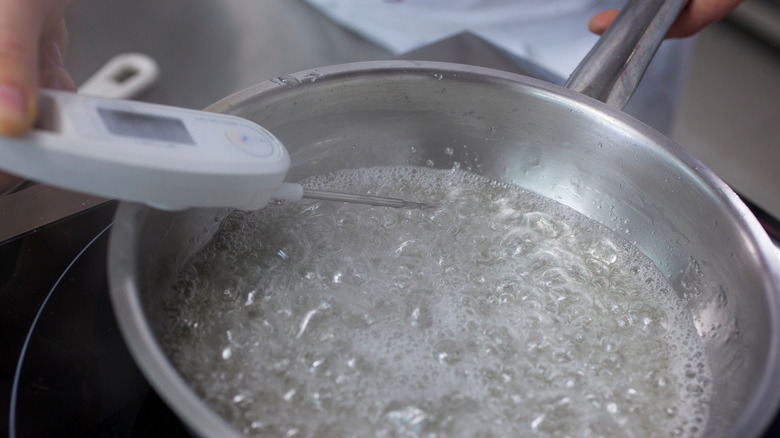This Is Why You Need To Calibrate Your New Food Thermometer
Whether you're a casual cook, a budding candy maker, or a devoted barbecue griller, an essential tool to have is a food thermometer. Cooking foods to the right temperature is a matter of safety, and a way of avoiding a nasty bout of food poisoning, warns the CDC. Safe minimum cooking temperatures can vary, from 145 F for beef, lamb, veal, and seafood to 165 F for chicken, turkey, and even leftovers, according to the U.S. government's Food Safety page. Ensuring your food is cooked to the right temperature also impacts the taste and texture of your food, especially meat — there's a big difference between a medium rare and well done steak, which have an internal temperature difference of around 25 degrees F (via The Kitchn). Plus you lose all those flavorful juices when you cut into a piece of meat to check if it's done (via Eat This, Not That!).
Luckily, a food thermometer takes the guesswork out of whether your food has been cooked to the right temperature. However, a thermometer is only good if it's accurate. So how do you tell if your thermometer is accurate, especially if it's brand new? By calibrating it. Luckily, there are two easy ways to calibrate your thermometer.
How to calibrate your thermometer
The two classic and easy ways to calibrate a food thermometer are the boiling water test and the ice water test. Basically, we know what the boiling and freezing temperatures of water are, so we can calibrate a thermometer using those two baselines. For the boiling water test, bring water in a pot to a rolling boil, then place the thermometer in the water, avoiding the sides and bottom of the pot. Your thermometer should read 212 F (or 100 C), assuming you're at sea level (via Food Republic). For the ice water test, fill a large glass with ice then cover with water. Insert your thermometer in the water after a few minutes, avoiding the sides and bottom of the glass. Your thermometer should read 32 F (or 0 C).
If your thermometer has a different reading for either test, then it's not accurate and needs to be adjusted. Analog thermometers have a nut or calibration dial in the back that should be adjusted until the thermometer reads the correct temperature, while digital thermometers often have a calibration feature or reset button, explains Epicurious. If all else fails, take note of how many degrees your thermometer is off by, and make adjustments to your recipes by that amount going forward.

